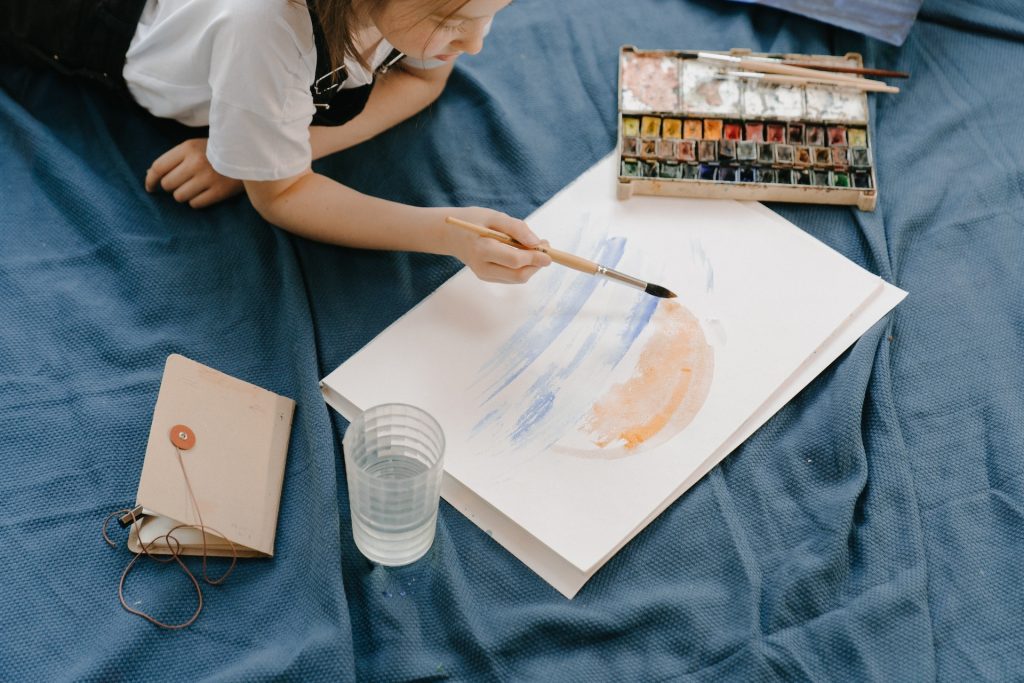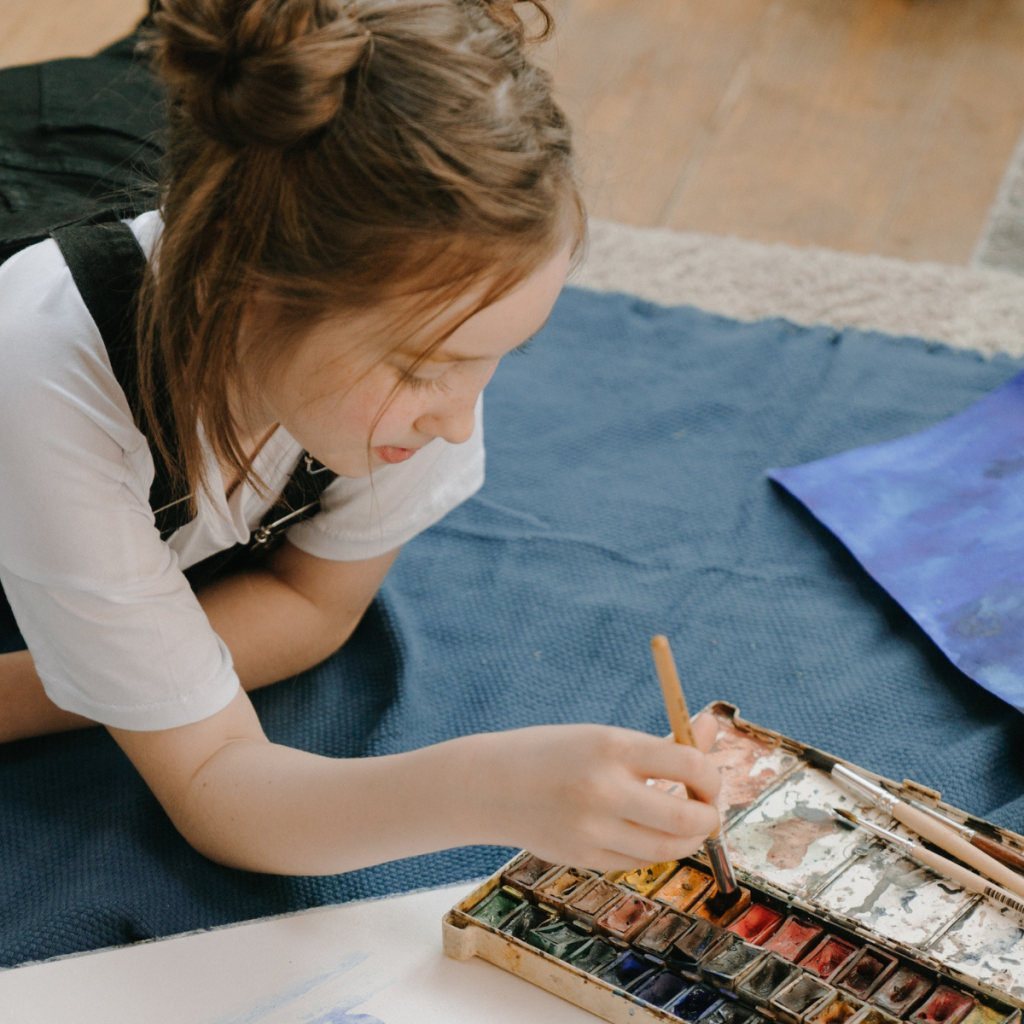Discover effective techniques and strategies for teaching painting to 8-9 year old children.
How to Teach Painting to 8-9 Year Old Children
Do you have a group of eager 8-9 year olds who are itching to paint? Fantastic! Teaching painting to children is not only a great way to foster their creativity but also to help them develop important cognitive and emotional skills. In this article, we’ll explore the best methods and techniques for teaching painting to this age group. So, grab your paintbrushes and let’s dive in!
Understanding the Artistic Abilities of 8-9 Year Olds
Before we start teaching painting, it’s crucial to understand the artistic abilities of 8-9 year olds. At this age, children begin to show significant advances in their artistic expression. Their cognitive development plays a vital role in their artistic growth, allowing them to think more abstractly and envision their creative ideas. Additionally, painting provides a wonderful outlet for emotional expression, enabling children to explore and convey their feelings through art.

Cognitive Development and Artistic Expression
During this stage, children have a better understanding of the world around them. Their improved fine motor skills and hand-eye coordination enable them to control their paintbrushes with more precision. You may notice that they can create more complex shapes, better distinguish colors, and even start experimenting with different painting techniques.
Furthermore, their cognitive development allows them to think more critically and conceptually about their artwork. They can now plan and execute their ideas with greater intentionality. This newfound ability to think abstractly also allows them to explore different artistic styles and experiment with various techniques.
Moreover, their cognitive growth enables them to understand and appreciate the work of other artists. They can analyze and interpret artworks, recognizing the use of color, composition, and symbolism. This understanding enhances their own artistic expression as they draw inspiration from the works of others.
Emotional Benefits of Painting for Children
Painting offers numerous emotional benefits for children in this age group. It’s a therapeutic activity that allows them to express themselves freely and without judgment. As they immerse themselves in their art, they can also develop patience, resilience, and problem-solving skills. Encouraging children to paint can provide them with a safe space to process and communicate their emotions.
Furthermore, painting allows children to explore their imagination and creativity. It fosters a sense of freedom and self-expression, empowering them to create unique and personal artworks. Through painting, children can communicate their thoughts, experiences, and perspectives in a visual and tangible form.
In addition, painting can help children develop a sense of identity and self-confidence. As they see their ideas come to life on the canvas, they gain a sense of accomplishment and pride in their artistic abilities. This boost in self-esteem can extend beyond the art studio, positively impacting their overall well-being and self-perception.
Moreover, painting can serve as a means of relaxation and stress relief for children. Engaging in the creative process allows them to disconnect from daily pressures and immerse themselves in a calming and enjoyable activity. The act of painting can be meditative, helping children find inner peace and tranquility.
Overall, understanding the artistic abilities of 8-9 year olds is essential for effective teaching and nurturing their artistic growth. By recognizing their cognitive development and the emotional benefits of painting, we can create a supportive and enriching environment that encourages their artistic expression and fosters their overall well-being.
Preparing for the Painting Lessons
Now that we understand the artistic abilities and emotional benefits, it’s time to prepare for the painting lessons. Here are some key factors to consider:
Choosing the Right Art Supplies
Investing in good-quality art supplies is essential. Opt for non-toxic paints and brushes that are suitable for children. Watercolor paints and acrylic paints are great options for this age group. Make sure to have a range of brush sizes available to encourage experimentation and diverse brushstrokes.
When selecting paints, consider the vibrancy of colors and their ability to blend. This will allow children to create a wide range of shades and tones in their artwork. Additionally, choose brushes that have soft bristles, as they are easier for young hands to control.
It’s also important to provide a variety of surfaces for painting. Along with traditional canvas or paper, consider offering alternative materials such as wood panels or fabric. This will allow children to explore different textures and experiment with various techniques.
Setting Up a Kid-Friendly Art Space
Create a dedicated art space that is inviting and child-friendly. Cover the tables with protective plastic sheets and provide individual easels for each child. This will give them a sense of ownership over their workspace and encourage independence in their artistic endeavors.
Consider incorporating natural light into the art space, as it can enhance the colors and overall experience. If natural light is limited, ensure that the area is well-lit with bright, warm lighting to create an inviting atmosphere.
Display some colorful artwork and inspiring images around the space to spark their creativity. This can include famous paintings, photographs, or even their own artwork from previous lessons. By surrounding them with visual inspiration, you can ignite their imagination and encourage them to think outside the box.
Don’t forget to have enough washable aprons or smocks to keep those adorable outfits paint-free! Providing protective clothing will not only save parents from the hassle of cleaning stained clothes but also give children the freedom to fully immerse themselves in the painting process without worrying about making a mess.
Lastly, consider incorporating some comfortable seating options in the art space. This will allow children to take breaks and reflect on their artwork, fostering a sense of relaxation and contemplation. Bean bags or floor cushions can be a great addition to create a cozy and inviting environment.
Teaching Basic Painting Techniques
Now, let’s move on to the fun part – teaching basic painting techniques. These fundamentals will lay the foundation for their future artistic endeavors.
When it comes to teaching children about painting, one of the most exciting aspects is introducing them to the world of color mixing. By teaching them about primary and secondary colors, you can open up a whole new realm of creativity. Imagine their faces lighting up as they learn how to mix red and blue to create a vibrant purple or yellow and blue to make a refreshing green. Encourage them to experiment with different color combinations and observe the beautiful effects they can achieve. Who knows? They might discover their very own unique color palette, becoming the next great color theorist!
But color mixing is just the beginning. To truly unleash their artistic potential, it’s important to explore different brush strokes. Show children the power of a straight line, which can be used to create the trunk of a tree or the edge of a building. Demonstrate the beauty of swirls, which can evoke the feeling of wind or water. And don’t forget about the humble dot, which can add a touch of whimsy to any artwork. Let them practice creating different textures and patterns using different brushes and techniques. Whether they’re painting a beautiful landscape or an imaginative masterpiece, these brush strokes will add depth and interest to their artwork, making it truly come alive.
As you guide children through these painting techniques, remember to foster an environment of creativity and exploration. Encourage them to think outside the box and take risks with their artwork. Remind them that there are no right or wrong answers in art – only endless possibilities. By instilling this mindset, you’ll not only be teaching them basic painting techniques, but also nurturing their confidence and passion for self-expression.
Encouraging Creativity and Individual Expression
While teaching painting techniques is important, it’s equally crucial to encourage creativity and individual expression. Here’s how you can nurture their artistic souls:

Guiding Without Overpowering
As a teacher, it’s essential to guide children without overpowering their creativity. Encourage them to follow their instincts and make their own artistic choices. Ask open-ended questions to stimulate their imagination and help them express their ideas. Remember, there’s no right or wrong in art – it’s all about self-expression!
When guiding children in their artistic journey, it’s important to create a supportive and non-judgmental environment. By providing positive feedback and constructive criticism, you can help them develop their skills while still honoring their unique style. Encourage them to take risks and explore new ideas, fostering a sense of confidence in their abilities.
Furthermore, allowing children to have autonomy over their creative process can lead to a greater sense of ownership and pride in their work. By giving them the freedom to make their own artistic decisions, you are empowering them to trust their instincts and develop their artistic voice.
Promoting Experimentation in Art
Embrace the spirit of experimentation! Encourage children to try new techniques, explore different materials, and think outside the box. Provide opportunities for them to create mixed-media art or collaborate on group projects. The more they experiment, the more they’ll learn and grow as young artists.
One way to foster experimentation is by introducing children to various art movements and artists throughout history. By exposing them to different styles and techniques, you can inspire them to incorporate elements from different periods into their own artwork. This exposure to diverse artistic influences can broaden their creative horizons and encourage them to think critically about their own artistic choices.
Additionally, organizing art workshops or inviting guest artists to share their expertise can expose children to new ideas and perspectives. These experiences can spark their curiosity and ignite a passion for exploring different artistic avenues. Encourage them to document their artistic journey, whether through sketchbooks, journals, or digital portfolios, to reflect on their growth and progress over time.
Remember, the goal is not only to teach children how to paint or draw but also to instill in them a lifelong love for art. By nurturing their creativity and individual expression, you are helping them develop important skills such as problem-solving, critical thinking, and self-confidence. Embrace their uniqueness and celebrate their artistic journey as they continue to explore the boundless world of art!
Dealing with Common Challenges in Teaching Painting
Teaching painting to children may come with its fair share of challenges. Here are two common hurdles you might encounter and how to overcome them:
Addressing Frustration and Artistic Blocks
It’s natural for children to experience frustration or creative blocks during their artistic journey. Be patient and reassure them that it’s okay to feel stuck sometimes. Encourage them to take breaks, experiment with different techniques, or find inspiration from books or famous artists. Remind them that even the greatest artists faced challenges and that perseverance is key.
Managing Mess and Clean-up
We can’t deny it – painting can get messy. Embrace the mess while maintaining some order. Set clear rules about how to handle and clean art materials. Teach children about proper paintbrush cleaning techniques, disposing of waste, and the importance of keeping their art space tidy. Include quick and fun clean-up activities to make it an enjoyable part of the painting experience.
Teaching painting to 8-9 year olds can be a delightful adventure for both you and the young artists. By understanding their abilities, fostering creativity, and addressing challenges, you’ll inspire their love for art and help them explore the wonderful world of painting. So, let those paintbrushes dance and watch their imaginations soar!



